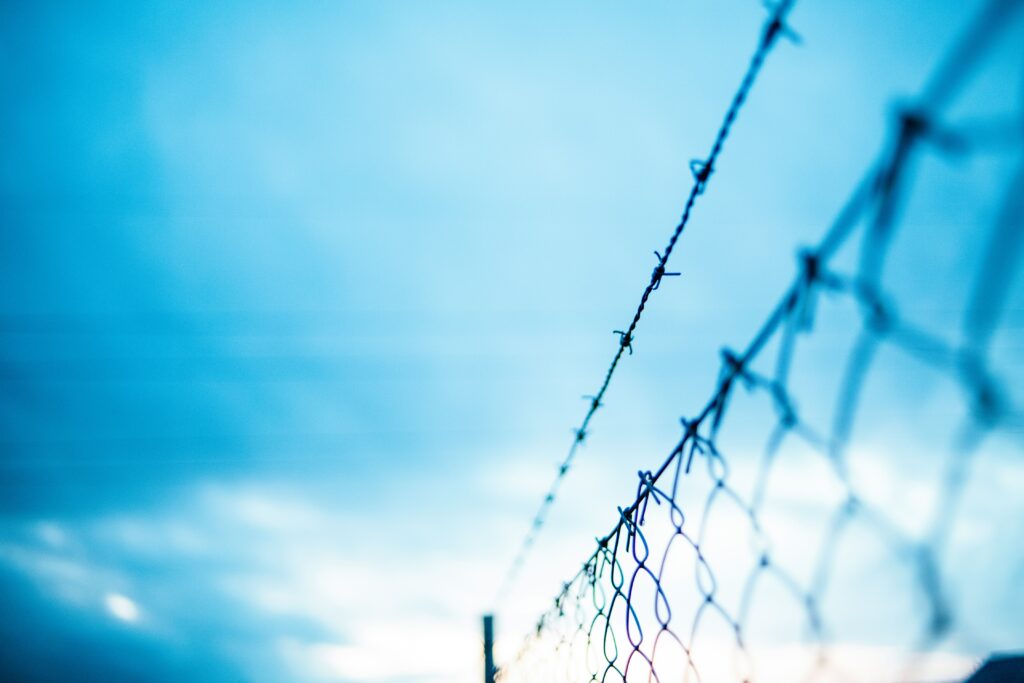Border authorities work in a time of unparalleled change and encounter several difficulties. A dynamic global landscape of travel and trade, along with emerging security and health risks, demand vigilant monitoring and collaborative, extensive action. Border agencies must modernize their procedures, workforce, and technology to succeed in this period of unpredictability and fast change. They must also make sure that genuine travelers and merchants have the most smooth and frictionless border crossings possible.

Biometric identification
One of the key trends shaping the future of border security is the use of biometric identification. Biometric technologies, such as facial recognition, iris scanning, and fingerprinting, are becoming increasingly sophisticated and accurate, making them powerful tools for border security. These systems can quickly and accurately identify individuals who may pose a security risk, such as suspected terrorists or criminals.
Artificial intelligence (AI)
Artificial intelligence (AI) is also playing an increasingly important role in border security. AI-powered systems can analyze vast amounts of data to identify patterns that may indicate a security threat. For example, AI algorithms can analyze surveillance footage to identify suspicious behavior or flag individuals who may be attempting to enter the country illegally. These systems can also help border patrol agents to make better and faster decisions in real time.
Drones and robotics
Drones and other types of robotics are also being used to monitor border areas and provide real-time surveillance. These systems can be used to quickly identify security threats and respond to them promptly. For example, drones can be used to detect illegal border crossings or to track the movement of suspicious vehicles or individuals.
Blockchain technology
Blockchain technology is a secure and transparent system for managing and verifying identity and travel documents. This technology uses a decentralized database to store information that is shared across a network of computers, making it nearly impossible to alter or hack. The use of blockchain technology can improve the efficiency and security of border processing, reduce the risk of fraud and identity theft, and enhance the privacy of travelers.
Big data analytics
Big data analytics involves analyzing large amounts of data to identify patterns and trends that may indicate a security threat. This technology can be used to detect and prevent criminal activity, including terrorism, drug trafficking, and human smuggling. By analyzing data from a variety of sources, including social media, travel records, and financial transactions, border officials can identify individuals or groups that may pose a security risk.
Machine learning
Machine learning involves using algorithms to learn from data and improve their accuracy and effectiveness over time. This technology can be used to automate the process of identifying and responding to security threats at the border. By analyzing data from a variety of sources, including surveillance footage, machine learning algorithms can identify suspicious behavior or flag individuals who may be attempting to enter the country illegally.
Cybersecurity
Cybersecurity is becoming an increasingly important aspect of border security as more systems become digitized. Governments must work to secure their border systems from cyberattacks and other forms of digital threats. This includes securing databases, networks, and other critical infrastructure from hackers and other malicious actors. One of the key benefits of cybersecurity is that it can help to prevent data breaches and protect travelers’ personal information. By securing databases and other systems that store sensitive information, governments can reduce the risk of identity theft and other forms of cybercrime.
International cooperation
International cooperation will continue to play a critical role in border security. Governments around the world must work together to share intelligence, coordinate border patrols, and develop common policies and standards for security. This is especially important in a globalized world where threats can come from anywhere and can easily cross borders.
Improved infrastructure
Improvements in border infrastructure, such as the construction of physical barriers such as walls or fences, can also enhance security. Physical barriers can help to deter unauthorized entry and make it more difficult for criminals or terrorists to cross the border. However, physical barriers alone are not enough to ensure border security, and they must be complemented by other technologies and policies.
Border security cannot be fully ensured by a single solution, but advanced technology, efficient policies, and global collaboration are crucial to ensure secure and safe borders.
Political instability and migration
